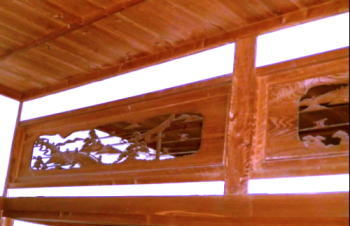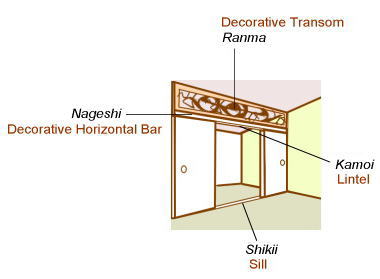Ranma
Decorative Transom

 Ranma or a decorative transom dates back to the Heian Period (794 - 1192). With the purpose of letting light in, its decorative aspect was not crucial in those days; therefore, simple patterns such as a lattice were mostly used. Ranma or a decorative transom dates back to the Heian Period (794 - 1192). With the purpose of letting light in, its decorative aspect was not crucial in those days; therefore, simple patterns such as a lattice were mostly used.

 Since the Kamakura Period (1192 - 1333), its ornamental aspect gradually became more focused, and in the Momoyama Period (1573 - 1600), the Ranma began to incorporate even more laborious decorations. In the Edo Period (1603 - 1867), the level of elaboration reached its peak: lavishing techniques of intricated sculpture and openwork, architects created heavily-decorated, glamorous items. Thus, the Ranma gradually began to lose its original function. Since the Kamakura Period (1192 - 1333), its ornamental aspect gradually became more focused, and in the Momoyama Period (1573 - 1600), the Ranma began to incorporate even more laborious decorations. In the Edo Period (1603 - 1867), the level of elaboration reached its peak: lavishing techniques of intricated sculpture and openwork, architects created heavily-decorated, glamorous items. Thus, the Ranma gradually began to lose its original function.
|
|




